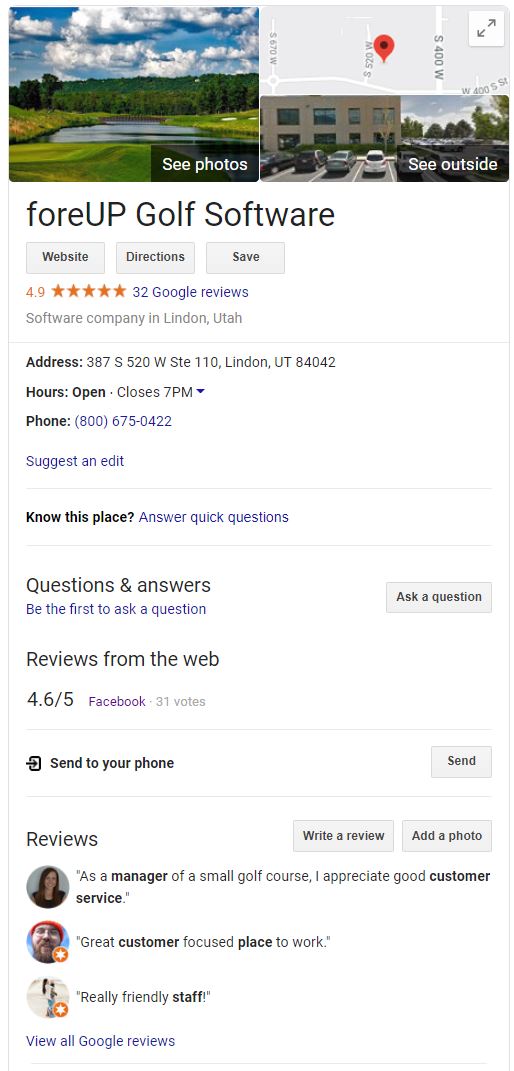The cooler months from October to April can be a breath of relief for golf course and club operators, giving them a chance to take a step back and organize the business. But after so many months of barely keeping abreast of day-to-day worries, the amount of tasks during the off-season can be overwhelming. We recommend you focus on three areas as the busy season approaches:
Business Strategies
Dynamic pricing
If your course is open for any amount of time during the off-season, you may want to consider investing in dynamic pricing. The idea is this: why offer the same tee time price for a rainy day as you would a sunny day? If you charge less for the rainy day and more for the sunny one, there’s a higher chance that players will both play on the rainy day and be willing to shell out a little extra for the sunny day. Courses who implement a dynamic pricing solution instantly see an increase in revenue, no matter where they are.
investing in dynamic pricing. The idea is this: why offer the same tee time price for a rainy day as you would a sunny day? If you charge less for the rainy day and more for the sunny one, there’s a higher chance that players will both play on the rainy day and be willing to shell out a little extra for the sunny day. Courses who implement a dynamic pricing solution instantly see an increase in revenue, no matter where they are.
Promote early payment specials
To keep some cash flowing in, offer your players discounted rates for tournaments, lessons, etc. if they sign up before the season begins. This is especially helpful if your course is struggling to make it through the off-season.
Physical Facilities
A course won’t get very far without healthy and well-maintained greens, and the off-season is the perfect time to make sure that your physical facilities are in order. Industry-specific software like Limble CMMS (who foreUP recently integrated with) can help you track assets, work orders, and inventory—all in one system. But whatever tools you’re using, you’ll want to maintain a few key items:
Fertilizers, Pesticides, and Other Chemicals
Thanks to early order incentives, pesticides and fertilizers can be obtained for significant discounts during the winter months. If your course is managed by an MCO or the municipal government, however, putting in the necessary number of bids can be completely time-consuming. The slower winter months provide the perfect opportunity to take the time to get those early order discounts.
Capital Purchases
Make sure that your superintendent has the equipment they need. The off-season is a great time to take a detailed inventory of all your assets and stockpile parts and equipment for the summer.
Annual Equipment Maintenance and Repairs
Many pieces of equipment operate seven days a week during the busy season, making repairs extremely difficult to perform in the summer. Preventative maintenance will reduce your costs significantly by preventing costly equipment failure during peak operating times.
Says one superintendent, “The value of the maintenance fleet more than justifies preventative maintenance and regular service. Maximizing the investment in equipment is good business sense and important to the viability of the overall golf course operation.”
Mower Blade Sharpening and Reel Grinding
Many courses contract this tedious work out to professionals, but despite the job’s time-consuming nature, it is significantly cheaper to do it in-house. If you don’t have the necessary equipment, consider investing in a blade sharpener and using staff to perform this job.
Marketing
We often hear about the importance of marketing, both to customers and potential players, but during the busy season it’s hard enough just to keep the players on the course happy, much less think about potential ones off the course. The off-season is a perfect time to come up with and begin implementing a plan so that your course will be full of customers when the doors open.
Build your online profile
Local search is one of the best ways for local businesses to get discovered, and the good news is that it’s completely free to use. All you have to do is update your Google My Business profile, and when players near you Google “golf course,” you’ll be at the top of the results.
Social Media
Businesses large and small are expected to have social media these days, both as a way to interact with the business and as a branding platform. At the very least, update and make regular posts to your Facebook and Instagram profiles, and use some of your downtime to schedule out posts for the busy season so that you aren’t scrambling to write something on a hectic day.
Email marketing
Take time to prepare email campaigns that you can send out during the year. This includes emails blasts about tournaments, holiday activities, planned discounts, etc. You can also set up automatic campaigns like a thank you message that gets auto-sent to every player that comes to the course
Create a strategy
Ultimately, every course’s marketing strategy will be unique, so take some time to look at your data and formulate yours. Where are people coming from? What is the average age of your players? What do they seem to like the best at the course? How do new players hear about the course? What’s your churn rate? Considering questions like these will help you create a focused, well-rounded plan for your course.
Continuing Education
The most successful courses tend to be those who adapt the best to changes, and the way to stay on top of change is through continuing education. Aside from the big shows like PGA Merchandise Show and the Golf Industry Show, there are hundreds of NCGOA and GCSAA chapter meetings, local golf shows, and PGA education opportunities going on. Take some time to familiarize yourself with the latest gadgets and tech in the industry, and the best current practices. Even if you don’t implement all of them (or any of them), you will be equipped with usable knowledge as you face the new season.
